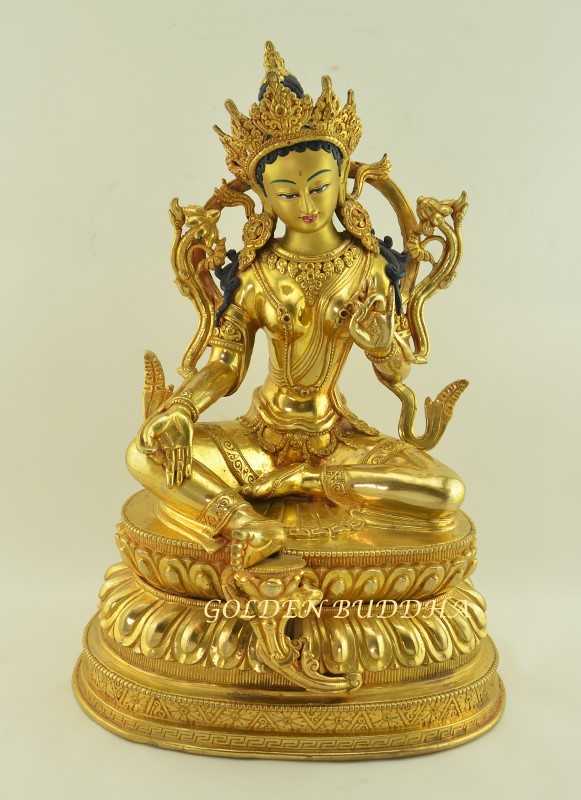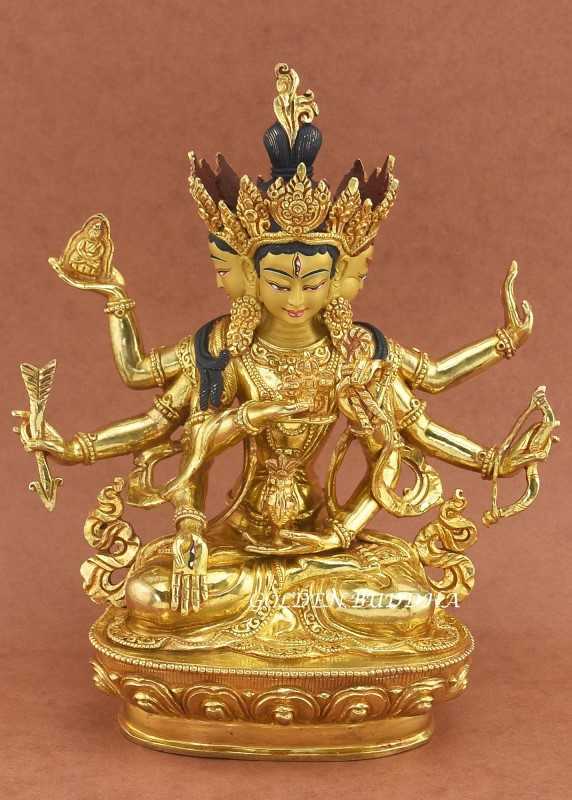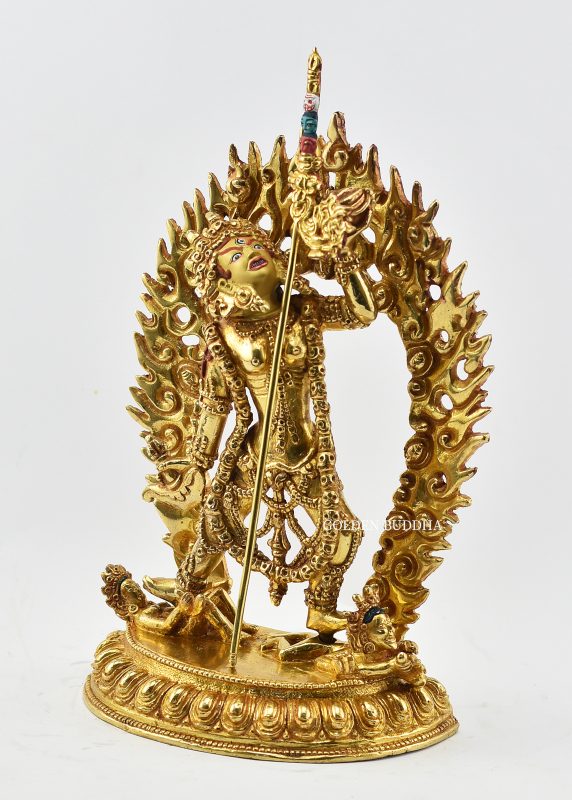The traditional lost wax sculpting method first emerged in Nepal during the 10th century ACE. It has since become a refined art form used to create the world’s best Nepali sculpture.
For many centuries, the Nepali artisans have indeed been the preferred source of the Tibetan monasteries who seek the best sculptures made to their specifications.
This traditional sculpting method has unfortunately come under pressure from low cost manufacturers using mass reproduced replicas. However, demand for high quality original Nepali sculpture remains intact. As a result, lost wax sculpting remains as the National Heritage of Nepal but needs your support to survive.
Guarded Secrets of Nepali Family Castes
The Nepali artisans have mastered their craft over many centuries by creating handicrafts for the Tibetan monasteries. Over time, a few of the master artisans developed the best sculpting techniques and held their knowledge as a fiercely guarded secret. Descendants of the master artisans passed on their knowledge and carry on the family name and tradition.
Primarily, three family castes have remained dominant at creating Nepali sculpture. Located in the Southeast portion of the Kathmandu Valley – Lalitpur Metropolitan City – the descendants of the three family castes remain. Still known as Patan to some, this location is the production center for traditional Nepali sculpture.

Tamrakar Caste
Tamrakar is Sanskrit in origin and it can be broken down into 2 parts. Tamra means copper and aakar means shape or to give shape to. Therefore, the Tamrakar are historically a caste of coppersmiths and other metal casters found in both Nepal and India. In the Kathmandu Valley, they form a part of the Newar community and they are one of the three family castes.
The Nepali Tamrakar caste works primarily with bronze and brass as base materials for sculpture creation. Furthermore, the Tamrakars are renown for hand working their metal sculpture which is very time consuming.
Shakya Caste
The word Shakya is derived from Sanskrit which means “the one who is capable”. Additionally, the history of the Shakya caste dates back to the Vedic age which predates the birth of Gautama Buddha. The Buddha was born into the Shakya Kingdom in Northern India (modern day Lumbini, Nepal). As a result, the Shakya caste in Nepal are in fact direct descendants of the historical Buddha.
Swarnakar Caste
The Swarnakar are a Hindu caste of goldsmiths from India and Nepal. As a result, a unique characteristic about the Swarnakar is that they work primarily with precious metal creating gold Nepali sculptures and other statue themes.

The Creation of Traditional Nepali Sculpture
The Nepali artisans use a form of metal casting known as “lost wax sculpting”. Rudimentary forms of cast metal sculpting has been used since prehistoric times to create basic tools and statues. However, ancient methods only created crude shapes which lacked fine detail.
The lost wax sculpting method allows the most intricate wax replica of a Buddhist deity to be cast into metal form. Additionally, the result cannot be recreated and each statue is an original. First, a perfect wax replica of the Buddhist deity must be created by hand.
This requires considerable artistic skill and experience in order to create a high quality wax mould. Otherwise, the fine features of the statue will be lacking.
The wax replica is then coated with a special mixture of clay which forms a hardened cast. A small hole is made in the base of the mould for the wax to drain out when heat is applied. The end result is hollow mould in the shape of the deity.
Liquefied metal alloy (brass, copper or bronze) is then poured into the mould and allowed to cool. The mould is then carefully removed to reveal the statue within. The statue is then polished and any blemishes can be worked out.
Fire Gilded Nepali Sculpture
Nepali sculpture is predominantly gold gilded using the traditional the fire gilding method. First, a mixture of mercury and 18K gold is evenly spread over the statue surface. Next, extreme heat is evenly applied using a flame torch. As a result, the mercury evaporates along with the impurities in the gold leaving a 24K pure gold finish.
The master artisan can complete a fully gold gilded statue with a surprisingly small amount of gold. As a result, the aesthetic benefits are immense and long lasting. However, the cost for a fully gold gilded statue is not prohibitive.
Additionally, valuable statues will increase the amount of karma the buyer will receive. Plus, a 24K gold gilded statue will never tarnish and retains its brilliant golden luster indefinitely.
Brilliant Golden Luster

The Uncertain Future of Nepali Sculpture
Tibetan monasteries and practicing Buddhists have historically been the primary customers of the Nepali artisans. However, when the Chinese took control of Tibet demand for traditional Nepali sculpture was drastically reduced. Tourists have since become the primary buyers. As a result, the selection of statues are lower in price but also lacking in quality.
Tourist demand requires a lower cost of production. Therefore, cheap replicas are mass produced in India using reusable moulds. Indeed, the market for high quality original statues has significantly diminished. Unfortunately, it is increasingly difficult for traditional Nepali artisans to stay in business. We must find new ways to promote their superior craftsmanship.
Promotion of Traditional Nepali Sculpture
We offer a wide variety of traditional Nepali sculpture for sale in our online gallery. Each statue is an authentic original that was handmade using the lost wax sculpting method – exactly as described in this post. Furthermore, your statue will receive a certificate of authentication from the Department of Archaeology in Kathmandu before shipping. As a result, the buyer can rest assured they have made an authentic purchase.

